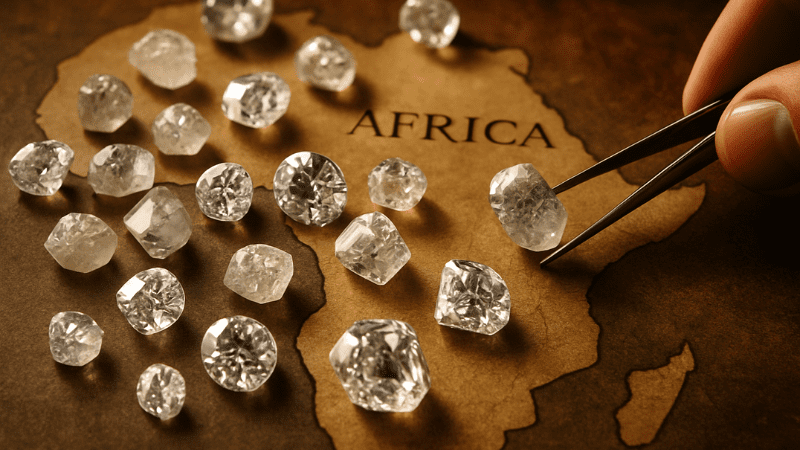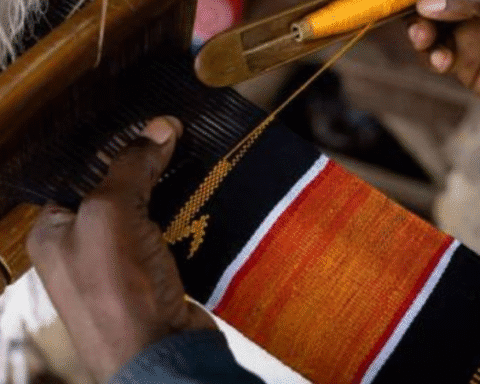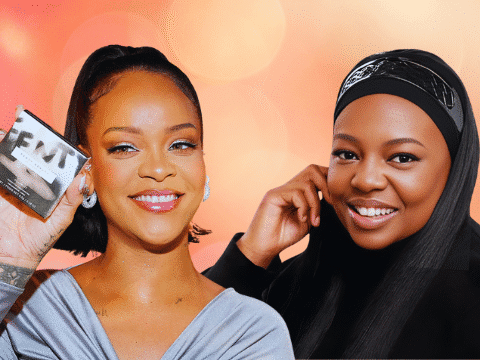Diamonds—long symbols of permanence, luxury, and scarcity—are undergoing one of their biggest transformations since De Beers built its empire.
Once nearly synonymous with control over supply, pricing, and marketing of natural diamonds, De Beers is now confronting structural shifts that are draining its monopoly power.
Rising competition from lab-grown diamonds, changing consumer preferences, and greater agency from African producers are combining to alter who owns the sparkle—and where the value in the diamond value chain flows.
De Beers’ Grip Weakens
Recent data show that De Beers is under increasing pressure.
In the first half of 2025, De Beers recorded a US$189 million loss, compared to a profit in the same period in 2024.
Production fell about 23% year-over-year to 10.2 million carats, with Botswana—a key producer—seeing a 26% drop.
These declines point toward more than a temporary slump; they signal shifting demand, inventory build-up, and eroding margins for what was once the world’s most powerful diamond company.
Lab-Grown Diamonds and Changing Consumer Behavior
A major force reshaping the diamond industry is the rise of synthetic, or lab-grown, diamonds.
They’re cheaper, faster to produce, and increasingly accepted—especially among younger and values-driven buyers.
The global market for lab-grown diamonds was valued at nearly $23 billion in 2023 and is projected to triple by 2032.
In the US, lab-grown stones now make up about 17% of the jewelry market by volume.
Prices have plummeted, with the average price of a 1-carat lab-grown diamond dropping by more than 80% since 2016.
Most of these stones are produced in China and India.
Natural Diamond Supply and Value Capture
At the same time, production of natural diamonds has fallen from 175 million carats in the mid-2000s to about 121 million in 2023.
While Africa supplies about 65% of the world’s diamonds, most of the value is added further downstream.
About 90% of diamonds are cut and polished in India, with Belgium and Israel handling many of the high-end stones.
This means African nations, despite being the source, keep only a small portion of the final retail price.
Africa’s Push for Ownership and Agency
That old model is being challenged.
African producer nations, led by Botswana, Namibia, Angola, and South Africa, are demanding more local beneficiation—policies that require cutting, polishing, and sometimes marketing to happen closer to home.
Botswana, for example, recently renegotiated its deal with De Beers, allowing the government to sell a significantly higher share of its own diamonds independently.
More countries are pushing for transparency in sales, alternative sales models, and reforms that tie their revenues more directly to the final polished value rather than volatile rough stone prices.
China’s Role and Other External Pressures
China’s influence on the diamond industry is multifaceted.
Not only does it produce a large share of the world’s lab-grown diamonds, it is also a major buyer—although demand for natural diamonds has cooled in China’s luxury market, further pressuring prices.
This dual role means China is both a competitor and a customer for African diamond producers, and that relationship will shape future market power.
What “Owning the Trade” Could Mean
For Africa, “owning the trade” means more than just mining rough stones.
It’s about building downstream capacity—investing in local cutting, polishing, grading, and even launching homegrown brands.
It requires policy reform, infrastructure, and transparency to attract investment and meet global quality standards.
There’s also a growing push for traceability and ethical branding, allowing diamonds to be marketed with provenance and fair labor assurances, tapping into new consumer values and potentially commanding a premium.
Risks and the Road Ahead
The opportunities are real, but so are the risks.
Price volatility could undermine national budgets, especially as lab-grown supply booms and demand for natural stones softens in key markets.
Building downstream industries is capital-intensive and requires skills and infrastructure not every country currently has.
There are still governance risks, from corruption to regulatory uncertainty, that could undermine local benefits.
And, as always, market trends can shift rapidly—economic downturns or luxury spending declines can quickly change the landscape.
A Rare Opportunity for Africa
The decline of De Beers’ dominance opens a historic window for African producers.
If they succeed, the next generation of the diamond industry could see a far greater share of the value—and the story—originating in Africa.
“Reclaiming the sparkle” is about more than economics. It’s about telling authentic stories, securing environmental and ethical value, and reshaping one of the world’s oldest luxury trades for the future.
Whether Africa can seize this moment will depend on policy, investment, global alliances, and its ability to adapt to the rapidly changing dynamics of the diamond industry.
But the shift is underway.
And for the first time in generations, Africa has more leverage—and more of the world’s attention—than ever before.





















